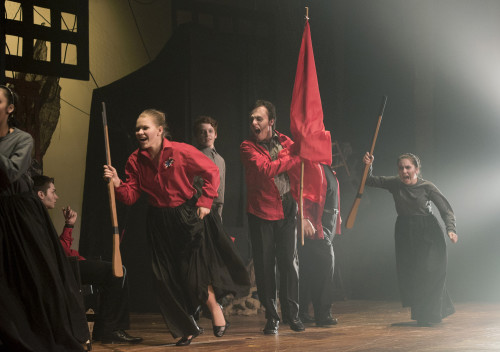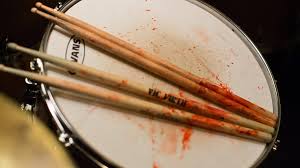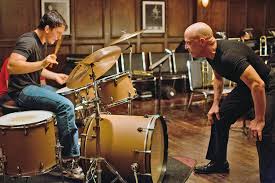If you haven’t been reading Toronto’s The Globe and Mail every weekend this summer, then you likely haven’t come across J. Kelly Nestruck’s terrific series in which he followed a single high school theatre production of a non-musical adaptation of Les Misérables from start to finish.
It no doubt benefited the youthful-looking Nestruck that he would stand out vastly less among a gaggle of high schoolers than say, me, and it appears to have allowed him unfettered access to the process, the logistics and the emotions that are part of any theatrical production, let alone one in a high school. While Kelly wasn’t undercover at Lakeshore Collegiate Institute, I like to imagine his series as the journalistic equivalent of Cameron Crowe’s original book Fast Times at Ridgemont High, but one set entirely in the drama group.
Because I write so often about crises and conflict in high school theatre, I found Kelly’s series essential, not solely because of one part’s focus on what is “appropriate” for a high school production. It is in my memory the most sustained piece of major mainstream newspaper reporting on high school theatre since Jesse Green wrote about the field for The New York Times in “The Supersizing of the School Play” back in 2005. But Nestruck’s series goes vastly farther than Green’s article in its depth.
Since I am not given to aggregating content, I’d prefer to think of what follows merely as an index, with excerpts that in no way give a full sense of the range of the complete articles and the stories they tell, in the hope that you’ll use this post as a guide to the Globe and Mail’s entire series. (The headline of each section will take you to each separate article.) I think for anyone who cares about theatre – not just high school theatre, but the entire field and it’s future – it’s a must-read.
It’s also my way of asking Kelly to take a bow.
* * *
Part 1: A quest to re-discover the magic of theatre, starting in a high-school drama studio
Last fall, approaching my seventh anniversary at the newspaper, I was in crisis about the art form that I had loved since I, myself, was a teenager.
Watching plays at Stratford, or in Toronto, or in Calgary upwards of 200 times a year, I had begun to worry about what I was seeing in the seats around me and on the stages in front of me.
I worried I was writing about an art form still dominated by white directors and playwrights and performers in a country that increasingly was not.
I worried that theatre was becoming an elitist art form whose major institutions were increasingly out of reach of even the middle class, that the core theatre audience was staying white and getting older – and that my profession was swiftly becoming as idiosyncratic and outdated as a mechanic for penny farthings.
Most worrisome of all: I began to lose faith that theatre was worth fighting for. I wondered if the “magic” I had always ascribed to live performance just was a myth I had bought into, and whether more complex and better-told stories – ones that reflect and engage with and interrogate the country and the world we live in – could actually be found on Netflix for a fraction of the cost.
Part 2: Finding a role that fits, on stage and in life
Drama teacher Greg Danakas settles behind a small desk, while 25 students from Grade 10 to 12 gather around him in a circle on the floor. “Let’s read this frikkin’ play!” he says – and you’d never guess the Tim Hortons coffee in front of him was decaffeinated.
“Is anyone Instagramming this?” asks Bradley Plesa, the Grade 12 student who will be playing prisoner-on-the-run Jean Valjean.
Listening to these kids immerse themselves in their characters for the first time, it’s clear how much work – and learning – is ahead of them.
The students pause every page or so as Mr. Danakas defines words such as “cleric” or “consumption” or explains a historical event referenced in the play, like the July Revolution. “It’s a French revolution, not the French Revolution,” Mr. D says – a recurring refrain for the rest of rehearsals.
It’s also clear, however, that Lakeshore’s acting students are up for the challenge. (Unlike me – I reluctantly declined Mr. Danakas’s kind offer to play author Victor Hugo in his dystopian production of the play.)
Part 3: Student actors learn the art of paying your dues
It’s easier for some students at Lakeshore Drama to pay dues than others. Lakeshore, a high school located in south Etobicoke, is not only representative of Toronto’s cultural diversity – but also the city’s economic diversity.
Allan Easton, the school’s new principal, explained the catchment area to me one day over a surprisingly delicious lunch prepared by the culinary-arts students. In the 1980s, Lakeshore was formed by the amalgamation of three schools – an academic-oriented school in a higher-income area, a technical school in a more blue-collar neighbourhood and a third in the centre that was what Mr. Easton calls a “classic public school catering to whoever.”
The demographics of the school still reflect that mix: There are students who live near the water and come from families with incomes that may be significantly six figures, and there are students who live to the east in Toronto public housing. That class disparity is often apparent in the Les Misérables cast – one student contributes to discussions of the play by talking about what she learned on a trip to France, while another shares his experiences growing up in foster care like Cosette.
Many have part-time jobs they struggle to balance with rehearsals – but that hold different importance from person to person. Certain students are saving up to go to expensive universities abroad; others are earning money to help out at home.
Part 4: Censor and sensibility: What’s appropriate for a middle-school matinee?
Mr. Danakas’s most popular production to date was a stage adaptation of Dracula inspired by the 1998 Wesley Snipes movie Blade. It featured 17 vampires who were – in Mr. D’s words – “dressed like prostitutes,” watching the action unfold from scaffolding.
Dracula sold out Lakeshore’s 600-seat auditorium all three nights it played in 2005 – and Kathleen McCabe, the principal then, wrote Mr. D to praise him.
“I am sure that producing a high school play may have limited your true creativity because of the censoring that I imposed on you,” she wrote in the letter, which Mr. D has framed and hung on his office wall. “However, you were able to design an amazing play and keep it on the edge.”
Times have changed, however – and now it’s Mr. Danakas who has to censor himself. “I wouldn’t be able to do Dracula now,” he says with a sigh.
The drama teacher is continuing to deal with fallout from his relatively tame, gender-bending Three Musketeers from last year.
Mr. Danakas had d’Artagnan – who wants to join the Musketeers – played by a female student and decided to deal with the implications of dropping a woman into the jocular world of 17th-century French swordsmen.
Athos, Portho and Artemis gradually gained respect for d’Artagnan, but they behaved chauvinistically toward her in the early scenes. “I thought it was totally harmless, juvenile silliness,” Mr. D says.
That’s not what a couple of local middle-school teachers thought of the groping and crude gestures with épées, however. They pulled their classes out of a matinee due to the sexual slapstick.
Part 5: Set up to fail? Less drama in schools could hurt theatre industry
As opening night of Les Misérables gets closer and closer, more and more people become involved beyond Mr. Danakas’s Acting Class – and more and more elements move outside of his direct control. Cosmetology students are working on the hair and make-up; business students are planning front-of-house operations; and the after-school sewing club is making long, black skirts for all the young women to wear in Mr. D’s non-musical, dystopian take on Victor Hugo’s classic tale.
On top of that, Timothy O’Hare, Lakeshore’s shop teacher, runs an entire for-credit class devoted to the design and construction of the set. I pop by the Toronto high school one morning in early May to see them at work. Instead, I find a handful of students studying or on their phones under the supervision of a substitute teacher, while a documentary about the history of sneakers plays unwatched.
Mr. O’Hare – who is much-loved by his students and doesn’t seem to mind his nickname “Mr. No Hair” – is away with much of the class at the Ontario Technological Skills Competitions. Grade 11 students Lamisa Hasan, Nicholas Latincic and Shamar Shepherd – who all had to stay behind for various reasons – happily leave the doc behind to talk to me about how they collectively designed and built the Les Misérables set.
Part 6: Tale of the red tape: Even in high school, bureaucracy can frustrate art
Allan Easton, the patient and good-humoured new principal at Lakeshore, walks me through some of what is holding up Mr. Danakas’s production. The worry about the fog machine is that it will set off the smoke detectors. The detectors could be bypassed, but then staff would have to be paid to walk around and look for fires – $1,200 in overtime for three nights.
Painting the floor, meanwhile, could be a problem because it might impinge on the skilled trades. “I can’t ever be seen to be taking a union job away from anybody,” Easton explains.
Health and safety concerns also complicate Les Misérables. I remember climbing up on ladders to help hang and focus the lights in my high school auditorium, but Lakeshore’s 1950s-built catwalks are off-limits to all (teachers aren’t even supposed to get up on a ladder, so an adult volunteer did that work on borrowed scaffolding). “Even our caretakers have to have ladder training before they can use a ladder safely,” Easton says. “We’re a very litigious society now.”
As for budgeting, Mr. Danakas used to roughly estimate his ticket revenue, but now sales have to be carefully projected. “ ‘It should be fine,’ isn’t something I can go with any more,” Easton says, with a sympathetic shrug. “Accountability is huge – more than it was in the past. … Taxpayers’ money, right?”
Part 7: Masters of the house: The payoff that makes the gruelling weeks of drama worthwhile
Even at Les Misérables though, it’s clear different audience members want different things. There’s Caroline Buchanan, for instance, described to me as the ultimate drama mom. Not only is her daughter, Samantha Dodds, playing Madame Thénardier, but her partner, Jim Ellis – a 60-year-old management consultant and part-time voice-over artist – has been conscripted to play the role of Victor Hugo.
Ms. Buchanan was one of the first in line to make sure she got good seats – and was primed for a moving experience. “I don’t know why, but it’s very emotional for me,” she says. “There’s so much lead-up – and you see what they all go through. And now it’s here.”
Sara and Alexander Plesa, Bradley and Samantha’s parents, are more skeptical about theatre in general. “I’ll be completely honest, where I’m not the ‘drama mom’ is that school comes first, grades come first and this comes last,” says Ms. Plesa, who works in a civilian role for the Toronto Police and affectionately calls her kids “drama brats.” “I’ll fight with Bradley to the end of time on that – and Mr. Danakas.”
But the Plesas have had a number of personal setbacks over the past year, with Mr. Plesa’s cancer diagnosis, cruelly, coming just as he was on the verge of being hired by the police. Their children’s performances tonight have surprised them – particularly boisterous Bradley’s deeply centred Jean Valjean.
“You wouldn’t know that their life has been the way it has been [lately] by watching that,” Ms. Plesa says. “It’s almost flooring to me: Is that my son?”
Part 8: Exit stage left: Lakeshore Collegiate’s drama students take a final bow
I came to Lakeshore with a naive point of view. I really did want to renew my faith in theatre after becoming frustrated with professional theatre in this country – and rediscover the joy of theatre I had felt as a high school student myself. But you only get to be a teenager once. And what I found when I looked at high school drama through an adult critic’s eyes were things I hadn’t noticed the first time around. I found an acting class that wasn’t fully representative of the racial diversity of its school, and that it was easier for students from certain economic classes to participate than it was for others.
I found a high school theatre with less money and less audience than it used to have, and more hoops to jump through, set up by administrators and unions. I found bureaucracy and I found self-censorship – and I found art’s value being sold with the language of business.
But what I ultimately discovered at Lakeshore is that the dissatisfaction that I’ve been feeling about the professional Canadian theatre I cover as a critic isn’t really about theatre at all, but about the wider society that theatre exists in and reflects. If theatre and democracy have indeed been linked since ancient Greece, then it makes sense that theatre would suffer from the same problems as our democracy – which is also unfair and bureaucratic and filled with leaders who speak to taxpayers instead of citizens.
* * *
Again, bravo to everyone – the teachers, the students, the administrators, the parents and the reporter. Bravo.
All excerpts from the series High School Drama by J. Kelly Nestruck from The Globe and Mail, originally appearing between July 3 and August 21, 2015.
Howard Sherman is director of the Arts Integrity Initiative at the New School for Performing Arts.







